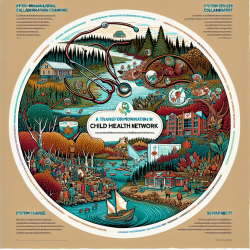Nocturnal enuresis, commonly known as bedwetting, is a prevalent issue that affects approximately 200,000 Canadian children over the age of six. This condition not only impacts the child's self-esteem and social interactions but also poses a challenge for practitioners looking to support families navigating this sensitive topic. Drawing insights from a comprehensive study outlined in the Alberta Child Development Newsletter, this blog aims to equip practitioners with strategies to improve their skills in managing nocturnal enuresis, encouraging further research, and fostering a supportive environment for affected families.
Understanding Nocturnal Enuresis
Nocturnal enuresis is often a symptom of delayed neurological development of the bladder control system, a reduction in vasopressin (a hormone that controls urine production), hereditary factors, or a small bladder capacity. It's crucial to distinguish between primary enuresis, where the child has never achieved night dryness, and secondary enuresis, which signifies a regression after a period of dryness. Identifying the type is vital for determining the appropriate approach to management and support.
Strategies for Management
- Education and Reassurance: A fundamental step is educating both the child and parents about nocturnal enuresis. Understanding that they are not alone and that the condition is manageable can significantly reduce stress and anxiety.
- Behavioral Interventions: Techniques such as alarm systems, which awaken the child at the onset of urination, have shown success. These methods help in conditioning the child's response to bladder fullness during sleep.
- Medication: In some cases, medication like desmopressin can be used to reduce urine production at night. However, it's essential to discuss the benefits and potential side effects with families.
- Motivational Therapy: Positive reinforcement and setting realistic expectations can encourage the child and enhance their confidence in achieving dryness.
Role of Practitioners
Practitioners play a crucial role in managing nocturnal enuresis by providing a comprehensive assessment to rule out any underlying medical conditions, recommending suitable interventions, and offering ongoing support to the child and family. Collaboration with specialists, when necessary, ensures a multidisciplinary approach to care.
Encouraging Further Research
While there have been significant advancements in understanding and managing nocturnal enuresis, continuous research is essential. Practitioners are encouraged to stay updated with the latest studies and treatment modalities, contributing to a broader knowledge base that can inform more effective practices.
Creating a Supportive Environment
Creating a supportive and non-judgmental environment is paramount. Encouraging open discussions about bedwetting in educational settings can demystify the condition and reduce the stigma. Support groups and resources for parents can also provide additional layers of understanding and coping mechanisms.
In conclusion, managing nocturnal enuresis requires a compassionate, informed approach that prioritizes the child's emotional well-being alongside physical treatment strategies. By staying informed through research, employing a variety of management techniques, and fostering a supportive community, practitioners can make a significant difference in the lives of children and families dealing with nocturnal enuresis.
For those interested in delving deeper into the subject, I encourage reading the original research paper on this topic. To read the original research paper, please follow this link: Nocturnal enuresis.










